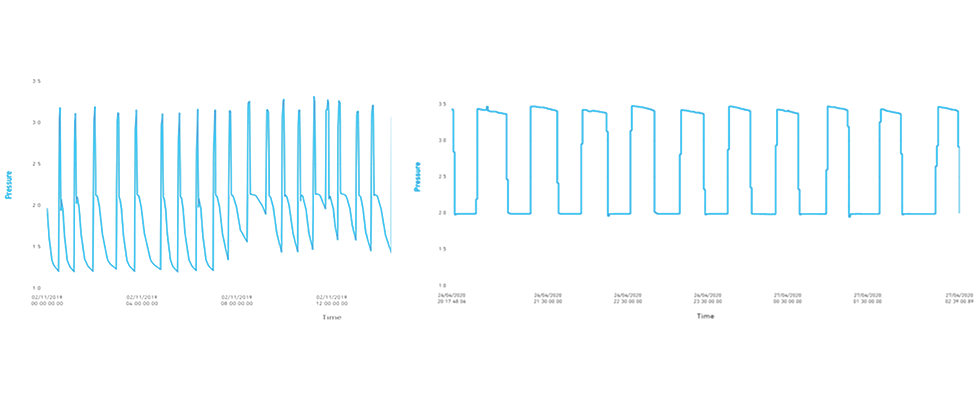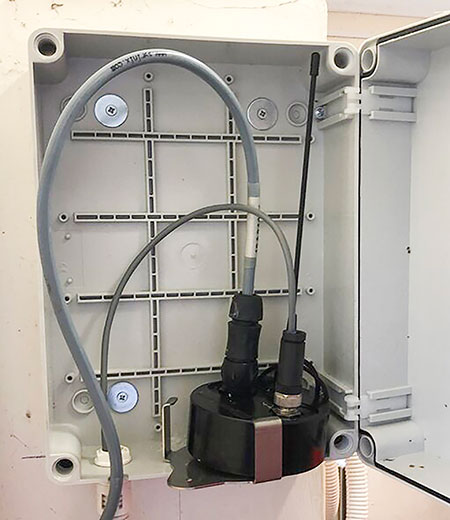
Anglian Water supplies water and sewer services to more than 6 million users in the east of England, a service area of more than 17,000 square miles (27,500 square kilometers). The utility manages nearly 8,000 miles (113,000 kilometers) of water and sewer pipe, including more than 6,000 force mains (also called rising mains) transporting sewage.
Keeping track of this vast infrastructure is a major challenge. If a burst occurs on a force main—allowing sewage to escape
the system—rapid detection and mitigation are essential to minimize environmental impact.

To improve its ability to detect these bursts, Anglian Water embarked on a major program of monitoring force mains, installing external monitors at key locations throughout the utility’s service area.
High-resolution data collected from the sensors was sent to the accompanying cloud analysis platform, delivering burst alerts whenever pressure in the main fell below 90% of the preset normal operating level. A drop in delivery pressure, or static head pressure, is indicative of a burst.
Armed with this information, Anglian Water could dispatch technicians rapidly to the affected area and physically walk the length of the pipeline to see if there were any signs of a break to detect the source of the burst.
This utility covers a high percentage of the farmed land in the UK, and prior to monitoring, bursts could go unnoticed for long periods of time if a pipeline ran underneath a field that was lightly visited. Monitoring minimizes the environmental impact—a key strategic priority.
Data-Driven Improvements
Building on initial success, the utility was keen to exploit the data generated by the monitors to improve operational performance and efficiency. In the beginning, this was a manual process, using burst alert patterns to analyze inefficiencies or monitoring sites with known issues. As the project expanded, it became an automated feature within the cloud analysis platform.
Analyzing the data revealed pressure transients, which were indicative of problems within the force main. In one example, the sensor data was traced to a drain back on a nonreturn valve, which had been causing nearby pumps to run more often than usual practice.

Once this valve was maintained and the blockage removed, it could properly close tight. The pumps resumed their optimal run patterns, resulting in a meaningful reduction in energy consumption while reducing wear and tear on the pumps, valves and other impacted components.
Performance Monitoring
The engineering team worked with the utility to define the next stage of the analysis process, which was to develop a set of performance alerts, tracking data to measure five key performance factors:
- Good pump/bad pump
- Low static head
- High static head
- Low-delivery pressure
- High-delivery pressure
Once completed, the subsequent analysis revealed a range of performance issues requiring attention, from worn pump impellers to fouled valves and compromised control valves. These findings complemented the existing telemetry system, providing a detailed view of asset performance.
Following this monitoring method, the utility identified more than 50 issues that affected performance and efficiency.
Using advanced hydraulic modeling software, a utility is able to obtain a deeper analysis of asset performance using the data generated by the external monitors. Insights produced by modeling provide valuable guidance on a range of operational issues—such as how to control pumps to reduce surge and lessen negative pressures to maintain performance at optimal levels and minimize asset wear and tear.
The modeling results have helped the Anglian Water team identify the most critical projects for attention and perform less costly mitigation where appropriate, ensuring maximum impact for capital expense.
In addition to improving operational efficiency, the monitoring program has been instrumental in identifying opportunities for financial savings.
Rectifying existing asset issues has already generated more than $40,400 (£30,000) per year in energy savings, based on completing two-thirds of planned mitigations. Add to this the reduced costs associated with investigating bursts, and the utility anticipates a payback on the technology investment within just one year.
This data-driven approach to performance monitoring provides the Anglian Water team with visibility into their vast system that informs decisions with the power to improve service to users.

